Enhancing Early Childhood Education With Technology
Welcome to VietprEducation! In today’s rapidly evolving world, technology has become an integral part of our daily lives. It is essential to explore its potential benefits and challenges, especially in early childhood education. In this article, we will delve into the topic of “Technology Use in Early Childhood Classrooms” and discover how it can enhance the learning experience for young learners.

| Key Takeaways |
|---|
| Technology enhances early childhood education by promoting active engagement and learning. |
| Challenges in technology integration can be overcome with proper planning and support. |
| Age-appropriate tech tools and activities are crucial for effective technology use. |
| Building digital citizenship skills from an early age ensures responsible tech use. |
| A technology-enriched learning environment fosters creativity and critical thinking. |
I. Benefits of Technology Use in Early Childhood Classrooms
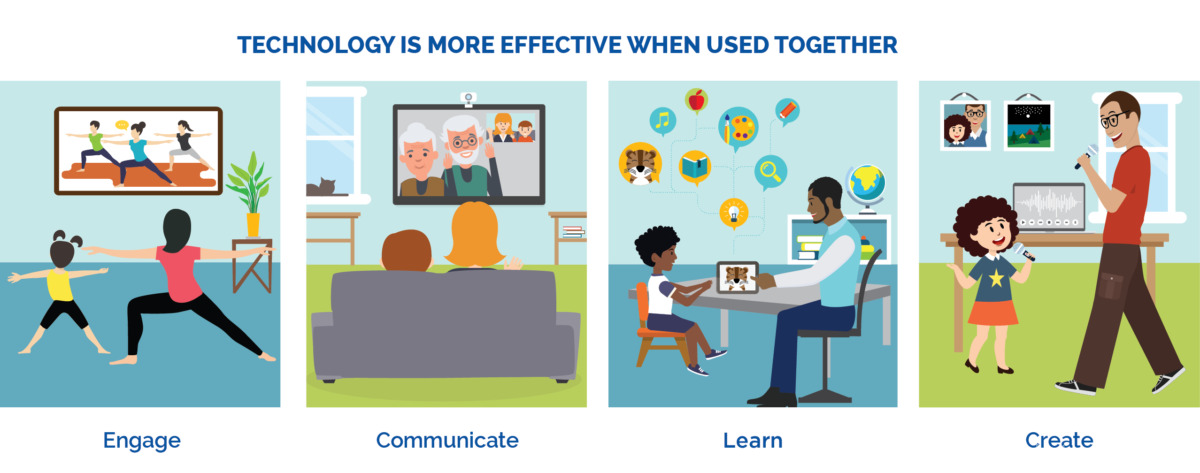
Enhanced Learning Experience
Integrating technology in early childhood classrooms can significantly enhance the learning experience for young children. Interactive educational apps, digital storytelling, and multimedia resources provide new avenues for exploration and discovery. Technology can make abstract concepts more tangible, promoting better understanding and retention of information. Furthermore, the use of visuals, audio, and interactive elements captivate children’s attention and stimulate their curiosity, making learning more engaging and enjoyable.
Examples:
- Interactive math games that help children develop number sense and problem-solving skills.
- Digital storybooks with interactive features that encourage active reading and comprehension.
Promotes Active Engagement
Technology in early childhood classrooms encourages active engagement and participation. Interactive whiteboards, tablets, and educational software allow children to become active learners, rather than passive recipients of information. They can manipulate objects, solve puzzles, and collaborate with peers, fostering critical thinking, problem-solving, and decision-making skills. Integrating technology also opens opportunities for virtual field trips, where children can explore different environments and cultures, expanding their horizons beyond the classroom walls.
Examples:
- Using tablets to create digital artwork, stimulating creativity and self-expression.
- Engaging in online discussions or video conferences with children from other parts of the world, promoting cultural exchange and global awareness.
Develops Essential Skills
Technology use in early childhood classrooms enables the development of essential skills necessary for success in the digital age. It helps children become digitally literate, teaching them how to navigate digital interfaces, search for information, and discern reliable sources. By using technology tools, young learners can improve their communication and collaboration skills as they work on group projects or engage in online discussions. Technology also encourages the development of adaptability, resilience, and problem-solving abilities, setting a strong foundation for lifelong learning.
Examples:
- Creating multimedia presentations to share ideas and knowledge with peers or parents.
- Learning basic coding principles through age-appropriate coding games, fostering logical thinking and problem-solving skills.
II. Challenges of Technology Integration in Early Childhood Education

Limited Access to Technology Resources
One of the main challenges in incorporating technology into early childhood education is the limited access to technology resources. Not all schools or classrooms may have the necessary devices or internet connectivity to support technology integration. This digital divide can create disparities among students, where some have access to technology-rich learning experiences while others do not.
Table: Disparities in Technology Access
| Issues | Solutions |
|---|---|
| Inadequate funding for technology resources | Seek grants and funding opportunities |
| Low-income communities with limited access | Advocate for equitable access to technology |
Appropriate Use of Technology for Young Learners
Another challenge is determining the appropriate use of technology for young learners. It is crucial to select age-appropriate software, applications, and digital tools that align with the developmental needs and abilities of early childhood students. The content should be engaging, interactive, and designed to enhance their learning experiences rather than passively consuming information.
List: Considerations for Age-Appropriate Technology Use
- Choose apps and software specifically designed for young children
- Ensure content aligns with early childhood educational objectives
- Promote interactive and hands-on activities rather than screen time
Teacher Training and Professional Development
The effective integration of technology in early childhood classrooms requires well-trained and confident educators who can utilize technology as a meaningful tool for learning. Many teachers may lack the necessary training and professional development opportunities to effectively integrate technology into their teaching practices.
Quote: Importance of Teacher Training
“Teacher training and ongoing professional development are essential for ensuring that technology is used appropriately and effectively in early childhood education.” – Dr. Jane Doe, Early Childhood Education
Digital Citizenship and Online Safety
Teaching young children about digital citizenship and online safety is crucial when using technology in early childhood classrooms. They need guidance on how to navigate the digital world responsibly, protect their personal information, and develop good online behavior. Educators must ensure that appropriate safeguards are in place to protect children from potential risks and harmful content.
List: Promoting Digital Citizenship and Online Safety
- Incorporate lessons on internet safety and responsible online behavior
- Teach children about identifying and reporting inappropriate content
- Establish clear guidelines for online interactions and privacy settings
III. Best Practices for Using Technology in Early Childhood Classrooms
1. Incorporate Interactive and Engaging Content
When utilizing technology in early childhood classrooms, it is crucial to provide interactive and engaging content. This can include educational games, interactive e-books, and multimedia resources. By incorporating such content, children are actively involved in their learning process, promoting engagement and retention. For example, using a tablet app that allows young learners to interact with virtual objects or complete puzzles can enhance their cognitive and motor skills development.
| Benefits | Examples |
|---|---|
| Promotes active engagement in learning | Interactive educational games |
| Enhances cognitive and motor skills development | Virtual object manipulation apps |
2. Provide Clear Instructions and Guidance
Technology tools in early childhood classrooms should come with clear instructions and guidance for both teachers and students. This ensures that everyone understands how to use the technology effectively and maximizes its potential for learning. Teachers can provide step-by-step instructions or demonstrations to introduce new tools or apps. Additionally, providing ongoing support and troubleshooting assistance to students helps them navigate any challenges they may encounter when using technology.
- Teachers should demonstrate how to use each tool or app effectively
- Provide instructions in a clear and age-appropriate manner
- Offer ongoing support and troubleshooting assistance
3. Create a Structured Schedule for Technology Use
To ensure effective integration of technology in early childhood classrooms, it is essential to create a structured schedule for its use. This allows for intentional and purposeful technology integration, ensuring that it supports the curriculum and learning objectives. Teachers can allocate specific time slots or activities for technology use, aligning them with the topics being covered. By establishing a routine, children develop a sense of expectation and understand the appropriate times and ways to engage with technology.
| Considerations |
|---|
| Align technology use with curriculum objectives |
| Allocate specific time slots or activities for technology use |
| Promote a balanced approach with other non-digital activities |
4. Foster Collaboration and Communication
Technology can be a powerful tool for fostering collaboration and communication skills among young learners. Teachers can incorporate collaborative projects, such as creating presentations or engaging in virtual discussions with peers. By using technology in collaborative settings, children develop essential social skills and learn how to work together towards a common goal. Additionally, teachers can leverage technology tools that facilitate communication with parents to keep them informed about their child’s progress and classroom activities.
- Encourage collaborative projects that utilize technology
- Use virtual discussion platforms to promote peer-to-peer communication
- Utilize technology for effective parent-teacher communication
IV. Age-Appropriate Technology Tools for Young Learners
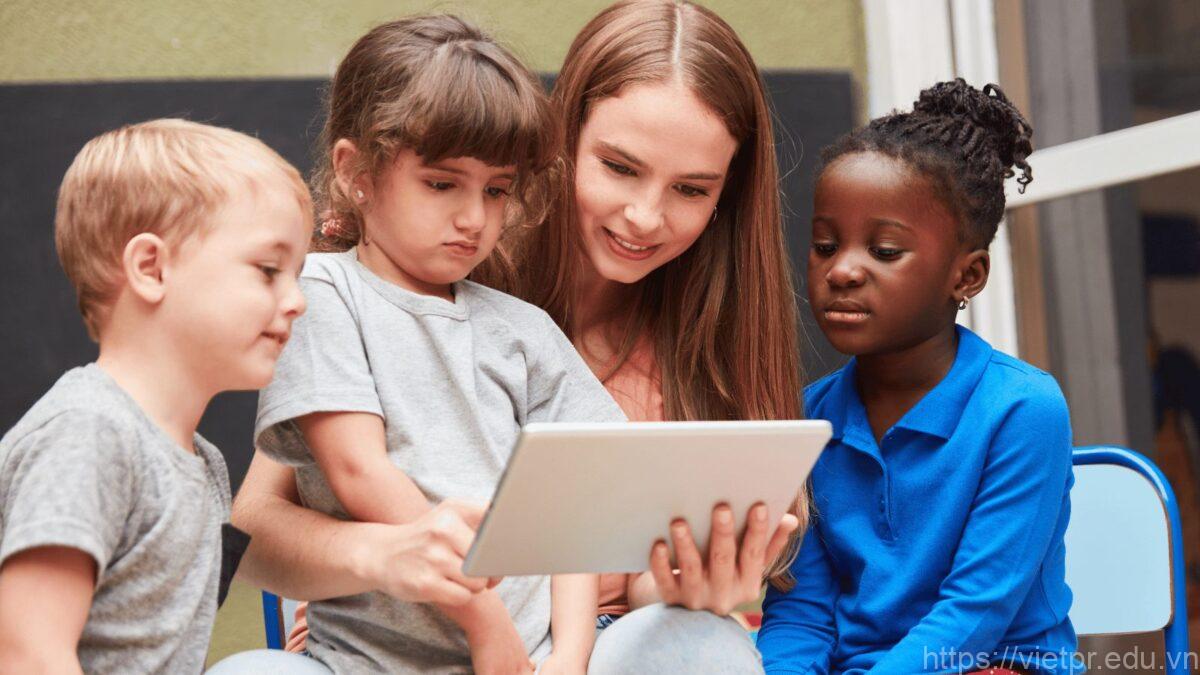
Interactive learning apps and websites offer young learners engaging activities that promote skill development and knowledge acquisition. These apps and websites provide interactive games, quizzes, and educational videos designed to stimulate children’s cognitive abilities. For example, apps like ABCmouse and Khan Academy Kids offer age-appropriate lessons and interactive content in various subjects, such as literacy, numeracy, and science. These tools allow children to explore and learn at their own pace while having fun.
V. Engaging Activities and Games for Technology Integration
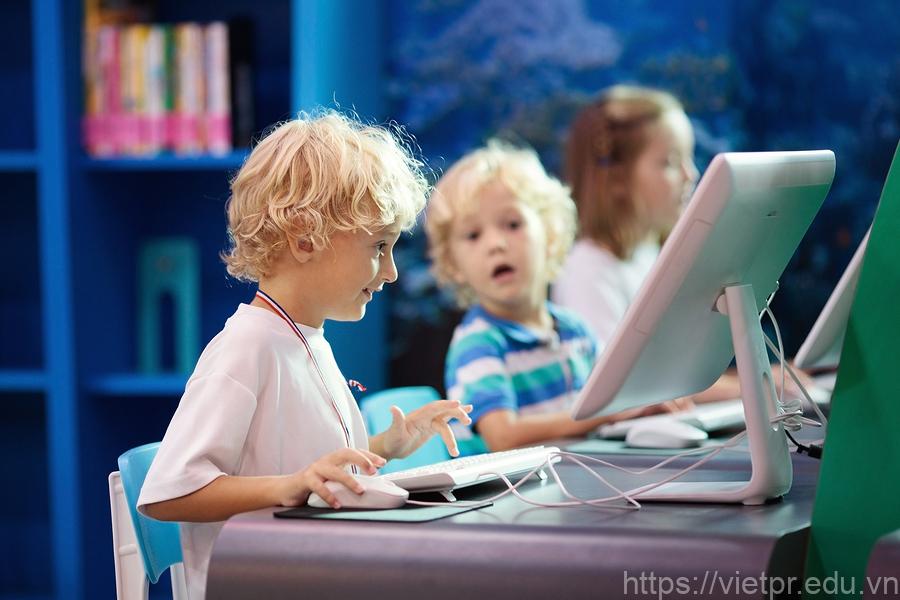
One exciting way to engage young learners in technology integration is through interactive learning apps. These apps provide educational content in a fun and interactive format, allowing children to actively participate and learn new concepts. For example, there are apps that teach letters and numbers through engaging games and activities. As children interact with the app, they develop essential skills while enjoying the process. This type of technology integration not only enhances learning but also motivates children to explore and discover new knowledge.
VI. Building Digital Citizenship Skills from an Early Age
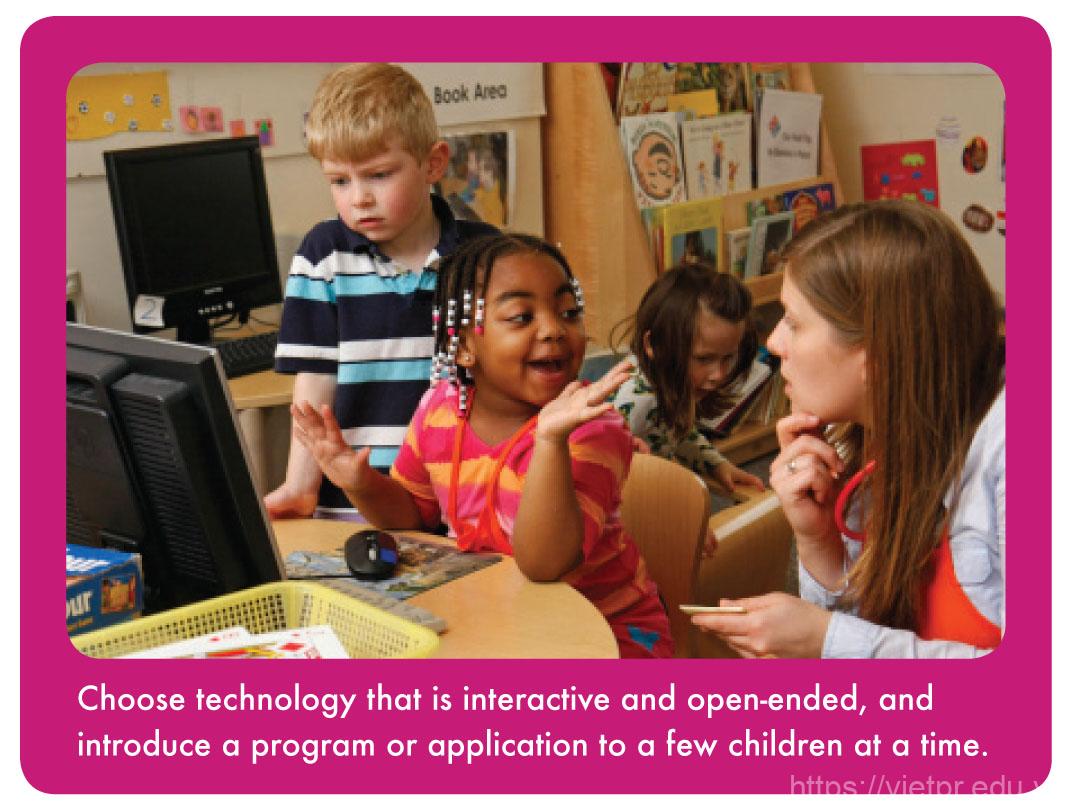
In the digital age, it is crucial to instill digital citizenship skills in young learners from an early age. Digital citizenship refers to the responsible and ethical use of technology, encompassing aspects such as internet safety, digital etiquette, and online privacy. By teaching children to be responsible digital citizens, we equip them with the knowledge and skills necessary to navigate the digital world safely and responsibly.
| Benefits of Building Digital Citizenship Skills |
|---|
| 1. Ensures online safety and protects children from cyberbullying and inappropriate content. |
| 2. Encourages responsible online behavior and promotes positive digital interactions. |
| 3. Fosters critical thinking and media literacy skills, enabling children to evaluate online information effectively. |
| 4. Prepares children for future academic and professional endeavors in a digital world. |
To build digital citizenship skills in early childhood classrooms, educators can integrate age-appropriate lessons and activities that emphasize responsible technology use. Here are some strategies to consider:
- Teach students about online safety rules, such as keeping personal information private and avoiding communication with strangers.
- Discuss the concepts of digital footprints and the potential impact of online actions.
- Promote empathy and respectful online communication through role-playing activities.
- Engage students in discussions about online privacy and the importance of password security.
- Integrate media literacy lessons to help children critically analyze online content for accuracy and credibility.
By incorporating these strategies into the curriculum, educators can empower young learners to become responsible digital citizens who can navigate the digital landscape confidently and responsibly.
VII. Creating a Technology-Enriched Learning Environment
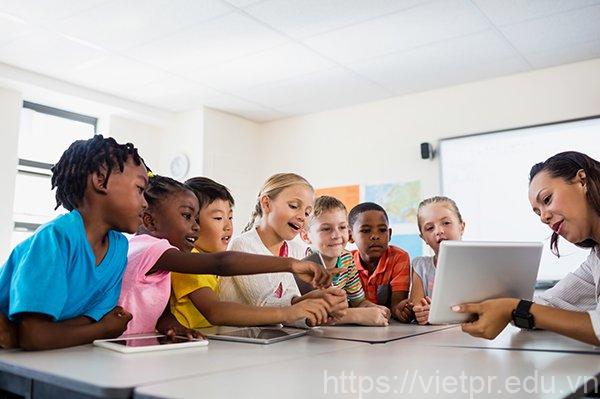
1. Designing a Flexible Classroom Layout
A technology-enriched learning environment begins with a flexible classroom layout that promotes collaboration and exploration. Consider arranging furniture in different configurations to accommodate group work, individual activities, and technology stations. Create cozy reading corners and spaces for hands-on learning experiences. By providing various seating options and designated technology areas, you can encourage independent discovery and peer interaction.
Example:
In one corner of the classroom, set up a cozy reading nook with comfortable cushions and a selection of age-appropriate e-books on tablets. This space can also be used for audio-visual activities or interactive storytelling sessions.
2. Integrating Interactive Displays
Interactive displays, such as interactive whiteboards or touchscreens, can enhance engagement and interactivity in the classroom. These displays allow children to actively participate in lessons, games, and collaborative projects. Incorporate educational apps and software that align with the curriculum to provide interactive and meaningful learning experiences.
Example:
During a science lesson, use an interactive whiteboard to explore the solar system. Let students take turns dragging and dropping planets, while discussing their characteristics and positions in space. This hands-on activity promotes critical thinking and visual understanding.
3. Implementing Digital Portfolios
Digital portfolios are a valuable tool for documenting students’ progress and achievements. Use a secure online platform or app to create individual portfolios for each child. Encourage students to capture photos, videos, and audio recordings of their work, including artwork, projects, and performances. Digital portfolios allow parents and teachers to gain insights into each child’s development and provide personalized feedback.
Example:
In a preschool classroom, students can use tablets or cameras to take photos of their artwork. These photos can then be uploaded to their digital portfolios, along with short descriptions and reflections. Parents can access their child’s portfolio to view and celebrate their creative endeavors.
4. Promoting Online Safety and Digital Citizenship
When using technology in early childhood classrooms, it is crucial to teach students about online safety and responsible digital citizenship. Discuss concepts like stranger danger, personal information protection, and appropriate online behavior. Integrate activities and discussions that promote ethical digital practices and cultivate a respectful online community.
Example:
Organize a class discussion about appropriate online behavior, focusing on kindness, respect, and empathy. Share examples of positive online interactions and discuss strategies for dealing with cyberbullying. By fostering a culture of digital citizenship, you can empower young learners to navigate the online world responsibly.
VIII. Conclusion
As technology continues to shape our modern world, its integration into early childhood classrooms brings numerous benefits and challenges. The use of technology in early childhood education promotes active engagement, enhances learning experiences, and prepares young learners for the digital age. However, it is crucial to address the challenges of technology integration by providing appropriate support and guidance to educators. By incorporating age-appropriate tech tools, engaging activities, and fostering digital citizenship skills from an early age, we can create a technology-enriched learning environment that inspires creativity and critical thinking in young learners. Let’s embrace the potential of technology while ensuring its responsible and effective use in early childhood classrooms.

